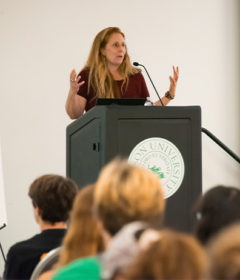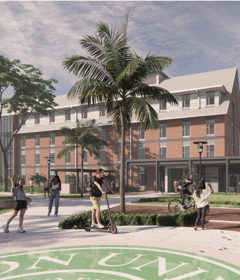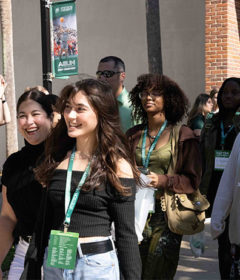Celebrating Native Florida Trees on Arbor Day
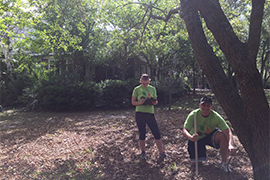
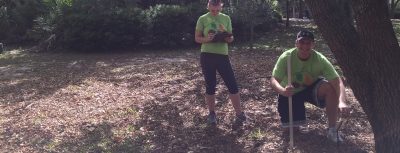
The Gillespie Museum will offer tours of its Native Florida Plant Landscape on Friday, April 28, from 2 – 3:30 p.m. This event will celebrate Arbor Day and will commemorate two decades of native plants on campus.
With support from the Lyonia Chapter of the Florida Native Plant Society, the museum has just installed 55 new identification signs for trees and shrubs, and designed a new walking tour featuring these now mature specimens, from American Hornbeam (Carpinus caroliniana) to Yaupon Holly (Ilex vomitoria).
Twenty years ago, the first trees of the Florida Native Plant Landscape went into place on the grounds of the Gillespie, a reimagining of the museum’s mission and the beginning of a native tree initiative on the Stetson campus, which eventually led to a 2000 Landscape Award from the Florida Native Plant Society.
 From the outset, the goal was instructional, to promote the benefits of using native plants in home and commercial landscapes as a means to increase biodiversity as well as to allow the landscape to flourish naturally, without the additions of fertilizers and biocides or excessive irrigation, often required by non-native species. As the earliest documents explain, “A native landscape is not only good for the environment, it is attractive, easy to maintain, and healthier for its inhabitants, both plants and animals.”
From the outset, the goal was instructional, to promote the benefits of using native plants in home and commercial landscapes as a means to increase biodiversity as well as to allow the landscape to flourish naturally, without the additions of fertilizers and biocides or excessive irrigation, often required by non-native species. As the earliest documents explain, “A native landscape is not only good for the environment, it is attractive, easy to maintain, and healthier for its inhabitants, both plants and animals.”
For David Rigsby, Manager of Stetson Grounds, native plants are important in maintaining the University’s “sense of place.” “The first thirty seconds one enters our campus environment, we are blessed to see and feel a rather substantial presence of both native tree and plant forms that cover much of our scenic 155 acres. As a result of the greening of our campus, I believe we gain a true sense of space and of an historic landscape that has emerged over the last twenty-five years, heightening our awareness of the natural heritage of our area .”
Equally important was the establishment of the site as an outdoor classroom. Over the last two decades, hundreds of volunteers from the campus and community have contributed to the study of and in the site, from students enrolled in courses on plant ecology, ornithology, introductory biology, and nature writing to undergraduates developing research projects in mapping, ethnobotany, and insect surveys. A native plant scavenger hunt continues as one of the most-requested activities for K-5 educational programs.
Terrence Farrell (Professor of Biology, Stetson) was one of the faculty members who first envisioned the project in the late 1990s. He notes its legacy as a site for education and research: “The grounds of the Gillespie Museum and the adjacent Sand Hill Restoration Site serve as a living herbarium and insect collection for the Biology and Environmental Science programs. It is a place where students and faculty can explore ongoing natural processes. Most importantly, the area is a reminder of what was and what could be again; a place where patience and close inspection continually reward us with the subtle beauty of natural Florida.”
Join us for lemonade in the shade of these beautiful trees and mature shrubs. This event is free and open to the public, and is a cultural credit opportunity for Stetson undergraduates. The Gillespie Museum is located at 234 E. Michigan Ave. DeLand. For more information, contact the museum at 386.822.7330 or [email protected].

